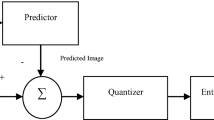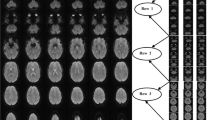Abstract
Advanced image scanning techniques produce high resolution medical images such as CT, MRI which in turn needs large storage space and bandwidth for transmitting over a network. Lossless compression is preferred for medical images to preserve important diagnostic details. However, it is only sufficient to maintain the high quality of an image in a diagnostically important region, namely Region of interest (ROI) for an accurate diagnosis. Non -ROI portion when compressed near-losslessly does not affect the image quality but reduces the file size effectively. We propose a compression technique where the prediction is done by Resolution Independent Gradient Edge Detector (RIGED) to de-correlate the image pixels and block-based arithmetic coding is used for encoding. The optimal threshold value, optimal q-level and the block-based coding removes inter-pixel, psycho-visual and coding redundancy from non-ROI part to achieve high compression whereas ROI part is compressed losslessly by removing inter-pixel and coding redundancy only. In this paper, optimal threshold-based predictive lossless compression in the ROI and optimal quantization (q) based near-lossless compression in the rest of the region is proposed. The proposed method is evaluated on volumetric 8 bit and 16 bit standard MR image data-set and validated on real patient’s 16 bit depth MR images collected from local hospitals. The performance of the proposed technique showed improvement over the existing techniques JPEG 2000, JPEG-LS, M-CALIC, JP3D, and CALIC by 40.89%, 34.50%, 32.92%, 22.36%, and 17.25% respectively in terms of Bits per Pixel (BPP).
















Similar content being viewed by others
References
Wu X, Memon N (2000) Context-based lossless interband compression-extending CALIC. IEEE Transactions on Image Processing 9(6):994–1001
An open-source jpeg 2000 codec written in c,” Accessed: 2019-04-19. [Online]. Available: http://www.openjpeg.org/
Anusuya V, Raghavan VS, Kavitha G (2014) Lossless compression on MRI images using SWT. J Digital Imaging 27:594–600
Avramovic A (2012) On Predictive-Based Lossless Compression of Images with Higher Bit Depths. Telfor J 4:122–127
Ayoobkhan M, Chikkannan E, Ramakrishnan K (2017) Lossy image compression based on prediction error and vector quantization. EURASIP J Image Video Process 7:1–13
Bairagi VK, Sapkal AM (2013) ROI-based DICOM image compression for telemedicine. Sadhana 38:123–131
Barboriak D (2015) Data from RIDER_NEURO_MRI. The Cancer Imaging Archive
Bhardwaj C, Urvashi MS (2017) Implementation and Performance Assessment of Compressed Sensing for Images and Video Signals. J Global Pharma Technol 6:123–133
Cavaro-Ménard C, Zhang L, Callet P (2010) Diagnostic quality assessment of medical images: Challenges and trends, European Workshop on Visual Information Processing (EUVIP). 277–284
Chavada P, Pate N (2014) Region of Interest Based Image Compression. Int J Innovat Res Comput Commun Eng 2:2747–2754
Chen K, Ramabadran TV (1994) Near-lossless compression of medical images through entropy-coded DPCM. IEEE Trans Med Imaging 13:538–548
“CIPR.” [Online].Available: http://www.cipr.rpi.edu/resource/sequences/sequence01.html
Dayal S, Gupta NN (2015) Region of Interest Based Compression of Medical Image using Discrete Wavelet Transform. Int J Comput Sci Appl (IJCSA) 5:81–91
A. Fidler, U. Skaleric and B. Likar, The impact of image information on compressibility and degradation in medical image compression. Med Phys. 33 (2006) 2832–2838.
Fouad MM (2015) A Lossless Image Compression Using Integer Wavelet Transform with a Simplified Median-edge Detector Algorithm. Int J Eng Technol 15(04):155604–7373
Gupta M, Alam MS (2014) ROI-based Medical Image Compression for Telemedicine Using IWT & SPIHT. Int J Advance Res Comput Sci Manag Stud 2:340–348
Jiang J, Grecos C (2001) A low cost design of rate controlled JPEG-LS near lossless image compression. Image Vision Comput 19:153–164
Joshi PV, Rawat CD (2016) Hybrid compression for medical images using SPIHT. Int J Current Eng Scientific Res (ijcesr) 3:2394–0697
Kaur A, Goyal M (2014) ROI-based Image Compression of Medical Images. Int J Comput Sci Trends Technol 2(05):2347–8578
Lon MR (2020) A high speed and memory efficient algorithm for perceptually-lossless volumetric medical image compression, Journal of King Saud University-Computer and Information Sciences
Lucas LF, Rodrigues NM (2017) Lossless compression of medical images using 3-d predictors. IEEE transactions on medical imaging 36:2250–2260
Meyer et al. (2015) Data from RIDER Breast MRI. The Cancer Imaging Archive. [Online]. Available: https://doi.org/10.7937/K9/TCIA.2015.H1SXNUXL.
Micro-Dicom Dataset [Online]. Available: http://www.microdicom.com/downloads.html
Prabhash C (2016) Medical Image Compression by using IWT & Linear Predictive Coding, GADL J Invent Comput Sci Commun Technol (JICSCT). 2
Puthooran E, Anand RS, Mukherjee S (2013) Lossless compression of medical images using a dual level DPCM with context adaptive switching neural network predictor. Int J Comput Intell Syst 6:1082–1093
Rajkumar TM, Latte M (2015) An Efficient ROI Encoding Based on LSK and Fractal Image Compression. Int Arab J Inform Technol (IAJIT) 12:220–228
Ramadoss M, Mahendran DS (2019) Design of Lossy And Lossless Algorithms For Roi-Based Video Compression. Int J Sci Technol Res 8:1439–1443
Said A, Pearlman W (1996) A new, fast, and efficient image codec based on set partitioning in hierarchical trees. IEEE Trans Circuits Syst Video Technol 6:243–250
Sharma U, Sood M, Puthooran E (2019) A novel resolution independent gradient edge predictor for lossless compression of medical image sequences. Int J Comput Appl. https://doi.org/10.1080/1206212X.2019.1610994
Sharma U, Sood M, Puthooran E (2019) A Block Adaptive Near-Lossless Compression Algorithm for Medical Image Sequences and Diagnostic Quality Assessment. J Digit Imaging 33(2):516–530
Shen H, David W (2017) Predictive Lossless Compression of Regions of Interest in Hyper-spectral Images with No-Data Regions. IEEE Trans Geosci Remotesens 55:173–182
Shuai D, Huang L, Zhang P (2006) Predictive Coding of Lossless Data Compression: A New Particle Dynamics Model. In Industrial Electronics. IEEE Int Sympos 1:565–570
Sneyers J, Wuille P (2016) Flif: Free lossless image format based on maniac compression. In: 2016 IEEE International Conference on Image Processing (ICIP), 66–70. https://doi.org/10.1109/ICIP.2016.7532320.
Song X, Huang Q, Chang S (2016) Novel near-lossless compression algorithm for medical sequence images with adaptive block-based spatial prediction. J Digital Imaging 29:706–715
Sreenivasulu P, Varadarajan S (2020) An Eflient Lossless ROI Image Compression Using Wavelet-Based Modified Region Growing Algorithm. J Intell Syst 29:1063–1078
Urvashi, MS, Puthooran EE (2018) Lossless Compression of Medical Image Sequences Using Resolution Independent Predictor and Block Adaptive Encoding. Int J Electric Comput Eng Syst 9 (in press)
Urvashi EP, Sood M (2018) Implementation and Performance Assessment of Gradient Edge Detection Predictor for Reversible Compression of Biomedical Image. Commun Comput Information Sci (CCIS) 955:1–11. https://doi.org/10.1007/978-981-13-3140-4_18
Vivek PJ, Elangovan K, Jayaram R, Javeeth BM (2016) ROI-based Medical Image Epitomize Using Speck and AAC. Int J Computation Res Develop 1:26–29
Weinberger M, Seroussi G (2000) The LOCO-I lossless image compression algorithm: Principles and standardization into JPEGLS. IEEE Trans Image Process 9:1309–1324
Acknowledgements
Author would like to thank the radiologist of Govt. Ripon Hospital, Distt. Shimla for his continuous help. Author would also like to thank the Banga’s Diagnostic Center, Distt. Mandi for providing volumetric MR image dataset.
Funding
This research did not receive any specific grant from funding agencies in the public, commercial, or not-for-profit sectors.
Author information
Authors and Affiliations
Corresponding author
Ethics declarations
Conflict of interest
Authors have no conflict of interest.
Additional information
Publisher’s note
Springer Nature remains neutral with regard to jurisdictional claims in published maps and institutional affiliations.
Rights and permissions
About this article
Cite this article
Urvashi S, Sood, M. & Puthooran, E. Region of interest based selective coding technique for volumetric MR image sequence. Multimed Tools Appl 80, 12857–12879 (2021). https://doi.org/10.1007/s11042-020-10396-5
Received:
Revised:
Accepted:
Published:
Issue Date:
DOI: https://doi.org/10.1007/s11042-020-10396-5




